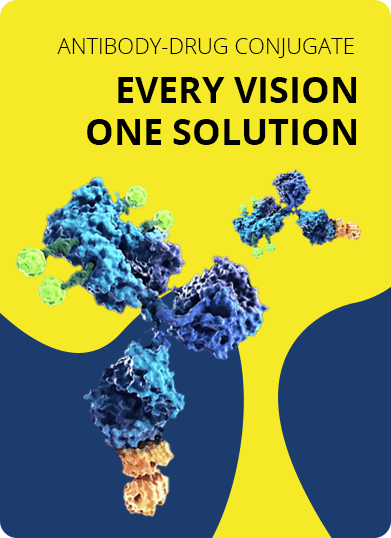- Home
- Applications
- Multiple Myeloma
- SLAMF7
ADC Development Services Targeting SLAMF7
Well-characterized myeloma surface antigens can be targeted with monoclonal antibodies (mAbs)-based immunotherapy, including signaling lymphocytic activation molecule F7 (SLAMF7). Antibody-drug conjugates (ADCs) have potential to further improve the clinical efficacy of naked antibodies via targeted delivery of highly cytotoxic payloads directly to malignant plasma cells. Creative Biolabs has the in-house capability and expertise to devise and execute appropriate strategies to fit your anti-SLAMF7 ADC development plan. Catalog Anti-SLAMF7 ADC Products are also optional for our worldwide clients. We are fully confident that our customized services and products can speed up your ADC development process.
Introduction of SLAMF7
SLAMF7 (also named CRACC, CS1 and CD319) is a glycosylated cell surface protein and it is a member of the signaling lymphocyte activation molecule (SLAM) family. All SLAM family receptor members have the same structure, characterized by an extracellular domain containing an immunoglobulin (Ig) variable-like domain and a C2-like domain, a transmembrane domain, and a cytoplasmic domain containing one or more immunoreceptor tyrosine-based switch motifs (ITSMs). Both isoforms of SLAMF7 (SLAMF7-L and SLAMF7-S) are expressed on human NK cells, but only SLAMF7-L mediates signals upon ligation with anti-SLAMF7 mAb. SLAMF7 is highly expressed in multiple myeloma (MM) cell lines, but not found on healthy tissue, primary tumor tissues, or hematologic and nonhematologic cancer cell lines. Moreover, there was a correlation between soluble SLAMF7 in the patient sera and the disease stage, indicating that soluble SLAMF7 may be a useful biomarker for MM disease progression. The high expression of SLAMF7 on MM cells make it an attractive target for treatment of this disease.
Anti-SLAMF7 ADC in Multiple Myeloma
Anti-SLAMF7 mAb can activate natural cytotoxicity of NK cells as well as enhance ADCC (antibody-dependent cell-mediated cytotoxicity) and thus makes an effective target for immunotherapy of MM. Unfortunately, the majority of responding patients will eventually develop resistance to mAbs and the disease will progress despite therapy. ADC therapy is a promising approach to target the genetically heterogeneous disease MM. For example, Azintuxizumab vedotin (ABBV-838), is an ADC in which a SLAMF7-targeted mAb is linked to the potent antimitotic compound monomethyl auristatin E (MMAE) via a cathepsin B-cleavable peptide linker. Targeting myeloma cells via the SLAMF7 protein with ABBV‑838 results in potent preclinical anti-tumor activity as a monotherapy, and in combination with multiple approved therapies, with complete tumor regressions against multiple xenograft models of myeloma. ABBV-838 is currently being investigated in a Phase 1 first-in-human safety study.
What Can We Do for You?
It is clear that ADC-based therapy has found its way to MM, adding significant improvement in survival of patients. A number of SLAMF7-specific IgG mAbs, either naked, engineered or with the addition of toxins, can be developed by Creative Biolabs. Our one-stop integrated development platforms including ADC Antibody Screening, Antibody Design and Conjugation, DrugLnk™ Custom Synthesis to support our ADC production services. Additionally, Creative Biolabs supplies a comprehensive set of ADC in vitro Analysis to assist our clients determine the biochemistry and in vitro efficacy of an ADC as well as ADC in vivo Analysis services for the assessment of the in vivo pharmacokinetic properties, efficacy, safety and potential immunogenicity of an ADC.
Creative Biolabs offers high quality anti-SLAMF7 ADC development services through our experienced staff and the state-of-the-art facility. If you are interested in our ADC development services, please feel free to contact us for more information.
For Research Use Only. NOT FOR CLINICAL USE.

Online Inquiry
Welcome! For price inquiries, please feel free to contact us through the form on the left side. We will get back to you as soon as possible.
